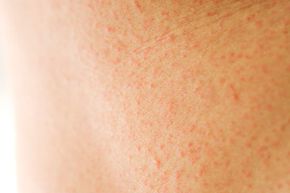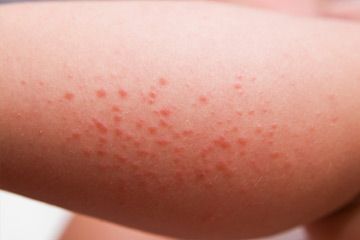Most people love being outside when the weather is hot. We have barbecues, go to the beach, ride our bikes and take long walks. But all this outdoor activity puts us at a greater risk for developing a condition known as heat rash -- a skin irritation caused by blocked sweat ducts. Heat rash usually develops in hot or humid weather, when people overheat and sweat profusely. It appears as a patch of small pink or red bumps on the skin and most commonly occurs on areas of the body covered by clothing. As people perspire, sweat ducts on the skin can become blocked. Clothing can uncomfortably rub against the skin, causing friction and irritation.
Heat rash is most common in infants [source: FamilyDoctor]. It tends to happen when parents overdress their children, particularly in hot weather. People can avoid heat rash by dressing in lightweight, loose-fitting, light-colored clothing and staying out of the sun on particularly hot and humid days. Parents can prevent their children from getting heat rash by not over-dressing them. Children should be dressed in clothes similar to what the parents would find comfortable for a hot day.
Advertisement
Typically, medical attention is not necessary unless the heat rash seems to be getting worse or persists for an extended period of time [source: FamilyDoctor]. If there are signs of an infection, such as fever or inflammation of the affected area, you should contact your doctor immediately. If the rash is severe, a doctor may find it necessary to prescribe certain medications. In most cases, however, heat rash will heal itself in a few days.
Although the rash will likely be gone in a few days, you will still need to contend with the itching and discomfort. We will cover routine treatments and natural remedies for this later in this article. But really, the best thing to do would be to avoid the problem entirely. To learn how to do this, keep reading to find out more about the causes of heat rash.
Advertisement


